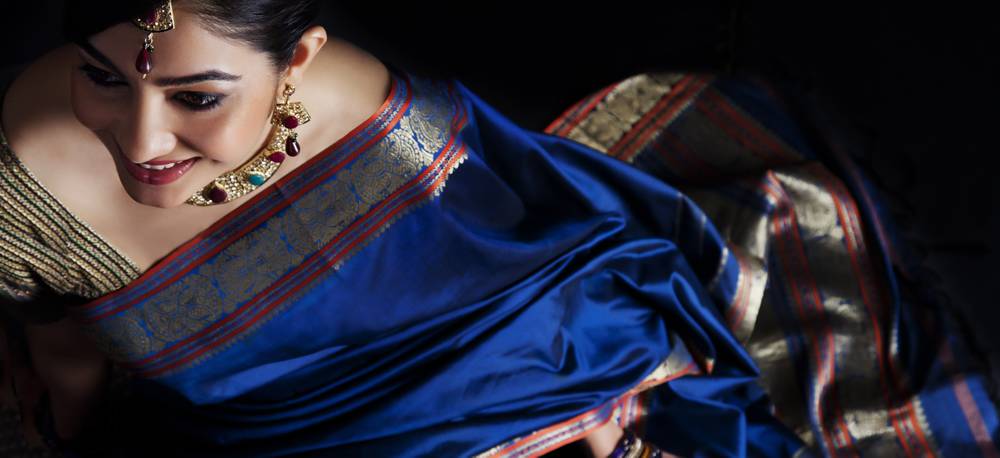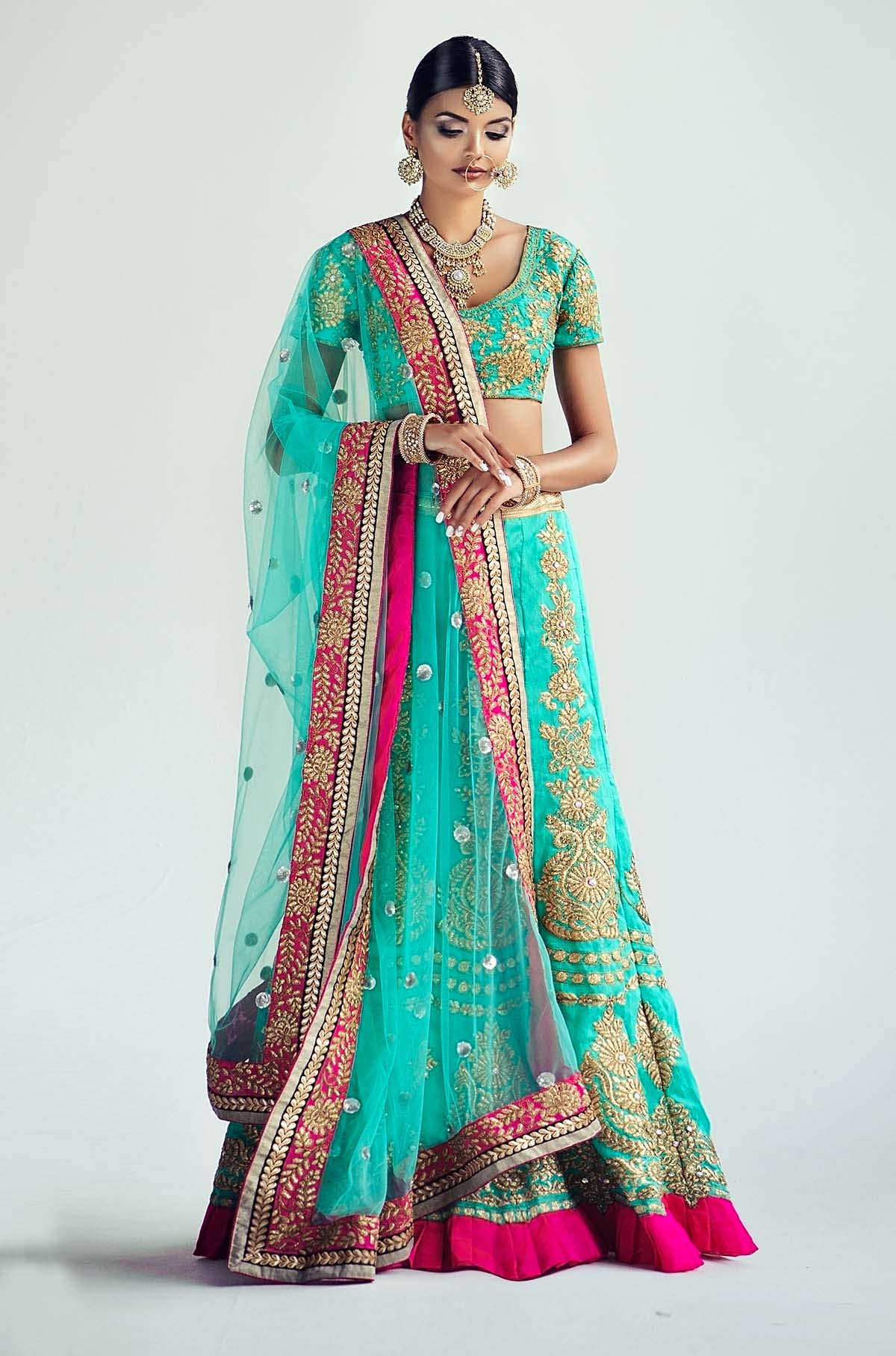
Silk Saris
The national dress of India is a true feat of engineering. Five metres of gorgeous material pleated and folded, tucked and draped to make the most elegant garment. The actual sari is simply a length of unstitched fabric but when a blouse or choli (usually of matching or complimentary fabric) and a petticoat are added, the result is a stunning outfit that never fails to please the eye. At Eastern Silk we have a stunning collection of Indian Saris.
The timeless Benarasi Sari is woven on hand looms by the banks of the Ganges at Varanasi in North India in the same way it has been for centuries. Master weavers take up to 3 months to complete 1 sari using motifs and designs handed down from father to son. The Benarasi Sari is the first choice for Indian Brides and for special occasions like festivals and family or religious events.
Benarasi Jamdani Saris are known for their very technically woven traditional motifs and are considered some of the finest of the work coming from Varanasi. Traditional designs include; chameli (Jasmine), panna hazar (Thousand emeralds), genda buti (marigold flower), paan buti (betel nut leaf), tircha (diagonal stripes) or the sought after konia or a corner-motif with a mango buta or flower.
Jangla Saris are distinctive for their all over pattern of brocade and are also traditionally hand loomed in Varanasi.
Tanchui Saris are made using a process similar to the weaving of brocade. They are extremely delicate and the pattern has little or no gold or silver in it. It is a perfect choice for weddings or special occasions.
Tussar Silk is native to Assam and Bihar, North India. The saris made from this silk are coarser in feel but with lustre that is greatly sought after.
Georgette Beaded Saris are hand or machine embellished after weaving and dyeing and can be traditional or modern in design.How to Tie A Sari

How to wear a Sari
If you are wearing your sari for a ‘bit of fun’ like a Bollywood Night or Indian Dinner Party then going to the expense of making the blouse or buying a petticoat may be un-necessary. If so, begin by finding a tight fitting top like a t-shirt with very flitted sleeves, a sexy singlet top, crop-top or similar. (The tighter and shorter, the better the look.)
You will also need something to tuck your sari into…..if you do not have the traditional petticoat, then we suggest a silk scarf, a fabric belt or a length of fabric long enough to tie.
Step 1
Tie a sash or belt tightly around your waist. (Make it as tight as possible as it will loosen by itself during wear.) Remember, you are relying on the sash to keep your sari on so fasten it well!


Step 2
Begin tying the sari at your waist by grabbing the end and a portion of the sari fabric in the same way you might tie a sarong. Make sure you start with the sari end in your right hand and the main length on your left.
Step 3
Now tuck the sari into the sash all the way around your waist. Make sure that the hem of the sari covers your feet and rests just on the floor.


Step 4
Begin from the tucked end and start making pleats of around 10-15 cm. Make about 7-10 pleats. (The number of pleats will be determined by the length of your sari and your waist size….it’s all fully adjustable so don’t worry!)
Step 5
Make sure the pleats fall straight and then tuck them into the front of your waist to cover the point where you tied the fabric. The pleats should point to your left.


Step 6
Drape the fabric right around you, going left to right and then bring it neatly under your right arm finishing it over your left shoulder.
Step 7
The pallu which is the ornately finished end of a sari should fall behind your back somewhere between bottom and knee level. You can adjust the length by making more pleats or loosen some if needed.


Step 8
Check the border. It should be straight as it crosses between your bust and shoulder and you can then pleat the shoulder fabric and fix it with a pin or brooch if you feel you need to.
